
This is a really interesting and unique site to visit - a true oasis in a very desert-like landscape in southeastern Spain. The moment you step out of Elche's train station, you are surrounded by palms of all kinds, shapes and sizes. The Municipal Park between the station and the tourist office features a large variety, but the most important and famous sight of Elche is the Huerto del Cura, a very nice botanic garden with ponds, statues, etc. The nearby San Placido garden includes a small, but interesting museum about the history and biology of the palm trees. Elche is quite a pleasant city with several interesting sights in the Old Town. If you have been to Granada and the Alhambra already, you have seen the major testament to the Arabs' centuries-long occupation of the Iberian peninsula. The Palmeral is probably the second-most important Arab monument in Europe, and definitely worth a visit.
Keep reading 0 comments
Somehow I can't quite agree with the positive reviews below. I do not deny the historic and architectural merits of the Silk Exchange, nor its WH value. It's quite an interesting building with some nice features (the columns in the main hall, the ceiling on the upper floor, the courtyard), and it certainly has its place in the history of business and economics. The problem is just that the organization and presentation are really terrible. The guided tours and the movie are only in Spanish (I do understand it reasonably well, but still, Valencia is full of international tourists, and the nearby cathedral, famous for its "Holy Grail", has audioguides and brochures in a whole bunch of languages) and there is nothing in the way of explaining what you can see (there are no signs or brochures whatsoever). So after walking around the building for about 15 minutes, there is nothing more to do and you have ticked off another WH site without having increased your knowledge of it at all. The upside is that the fee is only 2 Euros (as of 2012), and of course Valencia has a lot of other attractions, especially the impressive City of Arts and Sciences.
Keep reading 0 comments
This is a quite interesting and rather unique site spread over several places in the northeastern region of Aragon. It includes churches and secular buildings combining Christian (Gothic) and Muslim architectural features and decorations. The site is centered on the pretty town of Teruel, where it includes the Tower of El Salvador (which houses a nice museum), the Tower of San Mart�n (not accessible), the cathedral (impressive from the outside, but not really great inside), and the Church and Tower of San Pedro (very nice, but can only be visited with a Spanish-only guided tour; it includes a museum about a local legend featuring 2 star-crossed lovers). Those arriving by train will notice a huge fake-Mudejar staircase leading into town. The major city of Zaragoza also includes a few Mudejar buildings, the most interesting of which I found to be the large, fortress-like Aljafer�a Palace, which is a smaller version of the Alhambra and has a really beautiful courtyard. The La Seo Cathedral is also very impressive, both inside and outside. San Pablo Church and Tower is easy to find between the Aljaferia and the Cathedral, but was closed when I was there (the tower and the facade are the most interesting part anyway). Even though Zaragoza is not on most people's itineraries, it has a fair number of interesting sites (the most famous is the huge Pilar Basilica) and is on the high-speed train line between Barcelona and Madrid. From there, I took a quick train ride to the …
Keep reading 0 comments
Subak (irrigation) system in Bali is not a mere irrigation system. The water that irrigates the paddy fields comes from the water temple surrounded by the paddy fields.
While water holds a spiritual meaning for Balinesse, to purify, cleansing, to become a better being.... hence the whole Subak system has the same spiritual meaning as a whole.
The long awaited inscription for Bali into the WHS has finaly come. This place is arguably one of the most wonderful places ever existed. Where you could feel different while in different part of the island... and one couldnt get enough of Bali for sure..
Keep reading 0 comments
The Carmel caves are the only site where both Homo Sapiens and Neanderthals have been found side by side. Despite its historical significance there is really not much to see for the casual visitor. Access is only in guided tours where you get explained about the history of the digging and can watch a film about how people lived in these caves. The entire tour takes about half an hour. Most interesting findings like bone jewelry and stone utensils are on display in the small museum of prehistory in the nearby city of Haifa (where you can also visit the WHS Bahai Gardens).
Keep reading 0 comments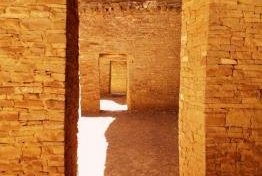
Chaco is one of many great archaeological sites scattered throughout the Southwest, though what makes it exceptional is the culture that emerged here and flourished over centuries. Chaco Culture is inscribed on a single criteria: (iii) to bear a unique or at least exceptional testimony to a cultural tradition or to a civilization which is living or which has disappeared. The diverse native traditions and histories today in the region do not necessarily perceive the Chacoan culture as "disappeared" and in fact view sites at Chaco Canyon, Mesa Verde, and other cultural sites as interconnected to the stories and living traditions of their people today.
I thoroughly enjoyed my visit here in May 2010 and to the Aztec Ruins component in November 2022. The complex of sites of "Chaco Culture National Historical Park" are large and spread out within the canyon. Half a day is appropriate to see all the sights. The exceptional passageways, doors, and kivas are some of the best preserved anywhere in the Southwest.
Aztec National Monument is not too far away and it's certainly worth your time. As the other essential component to the Chaco Culture world heritage site, the Aztec Ruins located near the Animas River operated as a regional center that may have flourished even after the great Chacoan houses to the South declined. There are only a few 'other" visitable components (besides Chaco Canyon/Aztec Ruins) for keen travellers seeking a complete experience. Pueblo Pintado or Kinteel "wide house" which is …
Keep reading 0 comments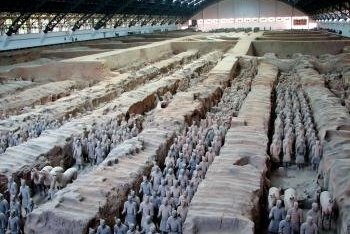
The highlight of any trip to Xian, the world famous Terra Cotta Warriors are magnifient to behold. The only downside is the sites are relatively quick to "view" and then you are basically on your way. There are some sites of historical interest nearby, but nothing spectacular.
Xi'an is a city of contrasts, an incredibly dynamic and beautiful history. The City Wall is enormous and a tentative world heritage site. Numerous properties inside and outside the city are now part of the "Silk Road" world heritage site. On the other hand, Xi'an is a city of rapid development (even more than many other Chinese cities), and the noise and pollution is obvious. Within the city I could not escape the sound of jackhammers or the sight of numerous cranes. Really though, a small complaint to an overall fascinating destination.
The Terra Cotta soldiers are well-known and essential to any visit to Xian, but the city offers much more than meets the eyes or ears. I would also recommend the Shanxi History Museum, which is far better than the museums in Beijing.
Keep reading 0 comments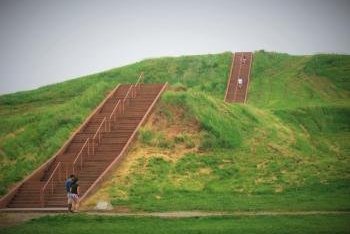
Cahokia is worth a stop for anyone visiting St. Louis. It is a nice side trip from the city. If you are visiting the area solely for the Cahokia Mounds you may be dissapointed. The site is deserving of its place on the world heritage list, the site IS important. However, as a tourist site Cahokia does not offer much besides mounds that are evidence of a unique civilization.
The climb up the stairs to the top of the mound gives little knowledge of the site without being paired with the video in the visitor center.
The museum should not be overlooked, it is an excellent source of information about the site, and the video provides a insightful view of what makes Cahokia special. Overall, I enjoyed the experience as I am very interested in Native American history. For me 1.5 hrs was sufficient to enjoy the museum and site itself. On a clear day from the mound top you can see St. Louis in the distance.
Keep reading 0 comments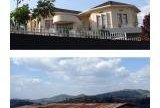
We visited Gisozi (then just called Kigali Genocide Memorial) and Murambi during a visit to Rwanda in Sept 2006. Like most tourists we were in Rwanda primarily to see Gorillas and other wild life but the “Genocide-related” sites were also of interest including places like the “Mille Collines” (aka “Hotel Rwanda”) and the Gacaca courts whose sessions in a village clearing we would often pass. Though whether these 4 sites deserve inscription is another matter!
The Kigali Memorial consists of a pleasant, but not particularly striking, modern building completed in 2004 (photo) , a surrounding cemetery and rose garden, together with a black stone memorial containing the names of up to 250000 victims buried in mass graves in the surrounding cemetery (as far as I am aware the deceased were brought there from surrounding areas rather than this being the site of a specific “massacre”). The building houses an exhibition about the Genocide as well as education and documentation centres (and a café!). It is on the list for every tourist to Rwanda but claims to be aimed at Rwandans as well, for education, remembrance, research and reconciliation purposes. I found the exhibition interesting and not too tendentious in its assignment of blame both long term (though Belgium does take a “bit of a beating” for developing the Hutu/Tutsi split!) and at the time, but the location and structure failed to generate, in me at least, any great impression.
Murambi was another matter altogether. The site consists of a school …
Keep reading 0 comments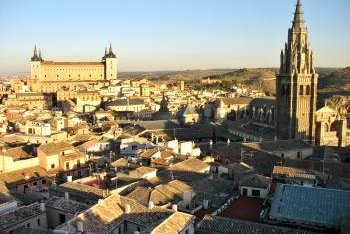
I took a bus from Madrid to Toledo. I only had a day, but my initial doubts of making the trip were forgotten once I stepped foot in this magnificient city. The diversity of architecture and sites alone make it an exquisite destination.
The towering cathedral, winding streets, well-preserved city gates, and wonderful views together made my visit to Toledo one of my most lasting memories in Spain. If you are ever in Spain, make sure you plan a trip to here. I am unsure how extensive the inscribed area is, but there are many worthwhile sites throughout the city. The outskirts of the city are interesting as well and worth exploring. Staying more than a day would be preferable.
I wandered and explored the city at my leisure. However, it was getting late, luckily I was barely able to gain entrance into the 13th century Cathedral of Toledo (last person of the day!). The impressive cathedral is of High Gothic design and is in excellent condition.
Keep reading 0 comments
My brother and I visited Amiens in Sept. 2011 as a 2 day stopover as part of our WW1 Battlefields tour. We were fortunate enough to be shown around this magnificent Cathedrale. We were also lucky enough to be shown around the internal balcony and out on the roof. The floor takes on a different perspective about 20 metres up. I have no religious interest at all but found this cathedral fascinating, the architecture and the sheer size were most impressive. From the right angle you can see the bend in the timber spire, and the laser light show is worth a look too.
Keep reading 0 comments
We went to the medina in Marrakesh in March this year. I found it far less threatening than the medina in Fes. There is more room to move around and you are not getting almost run over by mules all the time. The people are friendly, however be careful not to be conned into buying items that you don't really want. The stall owners can be very pushy and all will tell you that their goods are unique, however you can often find the same item around the corner and often cheaper. Haggling over prices is expected so don't pay the asking price unless you are totally happy that it is already a bargain.Do be careful where you eat, look at the food and then look at the cafe/restaurant, is it clean does the food look fresh. Be careful of the monkeys, they are trained to steal off you if they can while they look cute they are cunning and sometimes can scratch or bite and that will only lead to severe medical problems.
Over-all we had a good day in the medina but did find that the further you went in the less variety there was as everything was the same. If you want to see as much as possible then start early (they open about 10am) and take some food and water with you, the stores don't close until about sundown so you should have plenty of time BUT do take note of which way you are going, …
Keep reading 0 commentsKyle Magnuson
Temple, Mansion and Cemetery of Confucius
Temple, Mansion and Cemetery of Confucius (Inscribed)
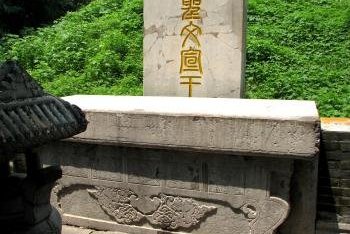
I really enjoyed my time in Qufu. While this small city is fairly off the tourist map, the Family Mansion of Confucius can get very crowded (like most China WHS). Luckily, my Chinese friend had family in Ti'an, close to Qufu, so we had an early start.
The complex itself is full of classic Chinese motifs. If you have already visited many Chinese style homes or palaces, it might loose some of its draw. However, I found it fascinating, the veneration of this family from the time of Confucius, lasting until the Qing dynasty (77 generations). The courtyards are spacious, lined with trees. The buildings are decorated, in some occassions, in the same style only reserved for the Emperor.
Like others have mentioned, some of the stonework, such as exquisite pillars are worth taking note of. For those who want solitude and space from the tour groups, take a stroll in the cemetary. In these burial grounds you will find countless tombs of the Kong family. Deep into the cemetery you will find the tomb of Confucius himself. There is the incredible fact that this cemetery contains the burial remains of more than 100,000 of his descendants! While the tomb itself is far more recently built than the 5th century BC, it is a great place for reflection and people watching. You might be suprised to see the lighting of incense, kowtows to the great sage, and even flowers being left in front of China's most famous philosopher.
Keep reading 0 comments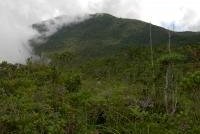
In, 2010, Mt. Hamiguitan was closed to visitors in preparation for its bid to UNESCO World Heritage inscription. During a recent hike (July 2012), the protected area has shown positive signs of recovery. The mountain is indeed a biodiversity/endemism hotspot; its bonsai forest is just one of the many outstanding features of the property.
Also worth noting is the tireless and collective efforts of the concerned local government units in ensuring the protection of the park. Such a practice is rare in the country and very inspiring.
Keep reading 0 comments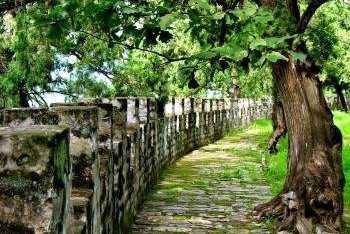
Like others I visited the Changling Tomb. I visited China the first time in 2006, and at the time I was not even aware of Unesco. I enjoyed my time at the tombs, while I was not rushed, I did feel there was so much more to explore.
It turned out I was right, when later I re-visited my pictures concerning the Ming Tombs, I realized I visited only one part of a huge complex of tombs. In the future I would like to make plans to visit some of the Ming Tombs around Nanjing. Particularly, after visiting so much of the Joseon tombs, it would be fascinating to explore more of the Ming sites in depth.
When I visited the Changling Tomb it was one of my first days in China, and I was pretty much "going along for the ride". I had little to do with the planning and everything was so new and interesting to me, my senses were on overdrive. It was also one of my first intertnational experiences. Now after much more experience in Asia, I would love to visit China a 3rd time and explore the country based on my own itinerary.
Keep reading 0 comments
NP Hohe Tauern is the largest in the Alps and the largest in Austria. It isn't what you would normally expect from a national park as there is extensive agriculture within its boundaries. There are some famous holiday resorts near the park, the best known of which is Bad Gastein.
Bad Gastein is a beautiful turn of the century spa resort with good cable car connections to the summits which are within the NP. The Alps are beautiful and there are some easy circular trails available. There is a small waterfall starting in the NP flowing through Bad Gastein.
The site was proposed as a natural site, but I cannot imagine what it could add to the three existing natural sites in the Alps in Switzerland and Italy. The similar Bregenz Forest had been proposed as a CL and was not successful.
Keep reading 0 comments
Rouen is a beautiful town with rows of medieval half-timbered houses. It has a large impressive historic city centre and quite a few imposing Gothic churches headed by the famous Cathedral. The municipal court is also extensively decorated and resembles a Gothic church.
Rouen was damaged during WWII, so unfortunately, although impressive, it does not feature a unified urban ensemble. Therefore, it seems it cannot compete well with other French historic towns such as Colmar, Dijon, Sarlat and many more, let alone many such European towns. Nonetheless, large segments of the old town are well preserved and the quantity of the preserved portion still makes it one of the largest old towns in France.
France in particular and Europe in general already feature so many historic towns on the list that it seems highly implausible Rouen should ever make it. Notwithstanding, it is a pleasant town worth visiting if you're around in Normandy.
Keep reading 0 comments
I recently visited the town of Swidnica where one of the two surviving Churches of Peace still stands. The town is about an hour away from Wroclaw and easily accessible by a minibus from Wroclaw railway station.
Swidnica is a very nice Renaissance town with a small and well preserved historic core. It also seems to be a lively town despite its small scale. The Church of Peace is situated 10 minutes walk from the main square, where it once stood outside the city walls.
The church is huge, wooden and densely ornamented - a special and quite impressive combination. It also features a complex row of galleries, each of which is covered by frescoes.
Unfortunately, I couldn't have a complete impression of the church during my visit as I couldn't go up to the galleries. I hope this is possible in general and that this was only due to current renovations, because it seems the view from the galleries is much wider and gives a better grasp of the building.
Moreover, even on the ground floor I was limited to only one half of the church, so I couldn't really see enough different angles of what seems to be an elaborate building. Nonetheless, this is an exceptional church and does merit a visit. I do wonder though whether Swidnica is indeed the better choice of the two inscribed (the other one is in Jawor) if you can't make it to both.
Keep reading 0 comments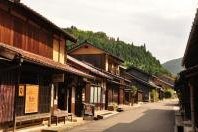
Japan is one of my favorite destinations, after a great personal winter tour to Northern Japan early this year; I never imagined that I would have a business trip to this country again in the same year, and with no hesitation I immediately planned to visit Iwami Ginzan, the only World Heritage Site on Honshu Island that I have not seen yet. Reading Els’s and John Booth’s review, Iwami Ginzan seems to be very hard to visit and quite complicated for means of transportation, but actually the place is very easy to go. Iwami Ginzan is one of the few tourist attractions in Japan, that tourists need to look for alternative transportation instead of its superb train system, and the answer for Iwami Ginzan is the reliable and comfortable long-distance bus. From Hiroshima Train Station, there are direct buses connecting the city to the village of Omori and Iwami Ginzan World Heritage Center within 2.5 hours making a possible one-day trip!
After many beautiful views of countless almost ready to harvest rice fields, my bus finally took me to Omori, the chief village of Iwami Ginzan, the first thing I did was to rent a bike and ride to Raganji Temple to see the cave temples, the caves and the statues inside were quite nice to see, then I continue my trip to Ryugenji Mabu Shaft, the sample silver mine that open for casual tourists. The mine was really cold inside even I visited in the summer …
Keep reading 0 comments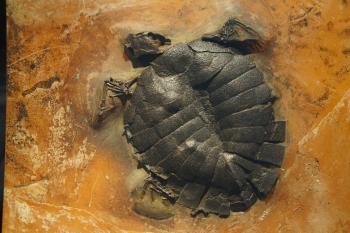
The view from the observation deck over the Messel Pit is quite uninteresting, you just see a big hole of about 500 meters in diameter. That this place is an important palaeontological site and that excavations still take place is not evident.
As the other reviewers I also recommend to take a guided tour. There are tours every day from April to October. Several years ago I attended the one-hour tour and on my last visit (in 2012) the two-hours tour. Both guides were excellent. In fact, there is not much to see, but they made the best of it. I learned a lot about the origin of the fossils, the geology, and the recent history of the pit (oil shale mining, the proposed garbage dump which was prevented by public opposition, and finally the WH inscription). During the two-hours tour we walked to the artesian well at the bottom of the pit and we also went past the site of the current excavations. The guide explained the technique: a large block is cut out from the oil shale and is carefully split with a flexible blade. If a fossil is found, it must be immediately stored in water to protect it from drying out. We were also searching for fossils in the overburden. That was a lot of fun, not only for the children. And with some luck you can find a part of a plant or a small insect.
The fossils were formed 47 million years ago (Eocene) …
Keep reading 0 comments